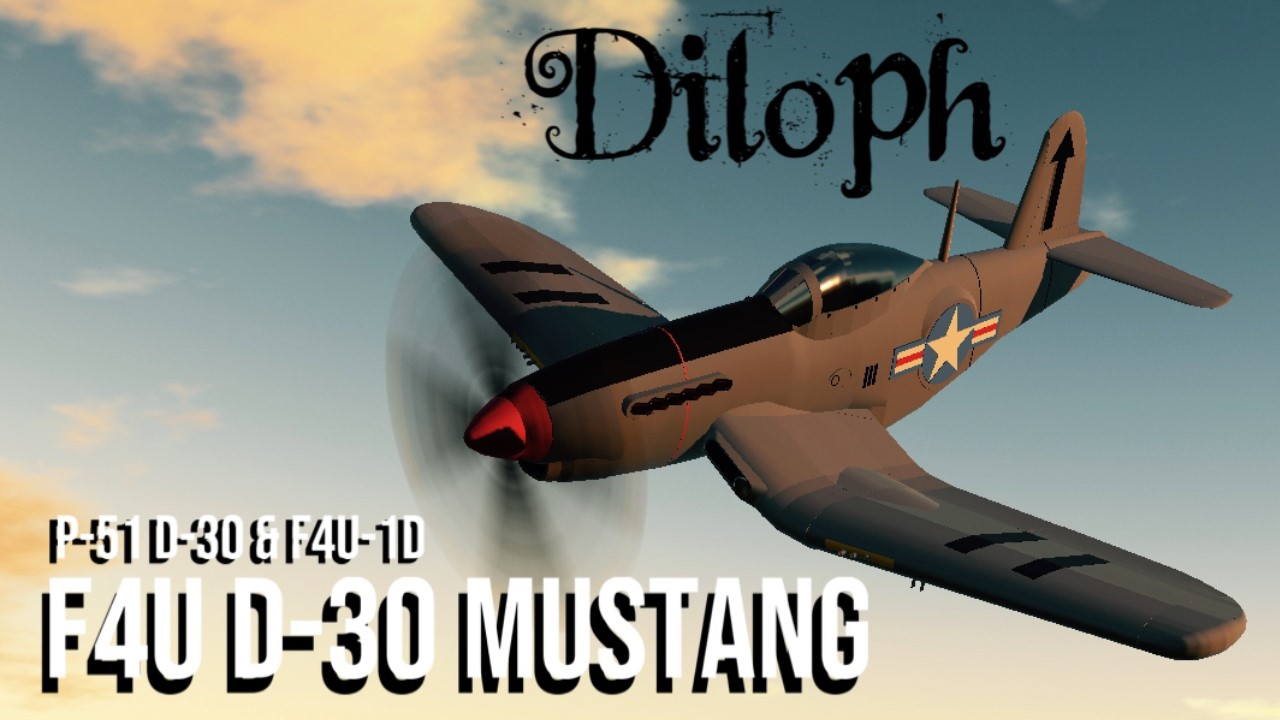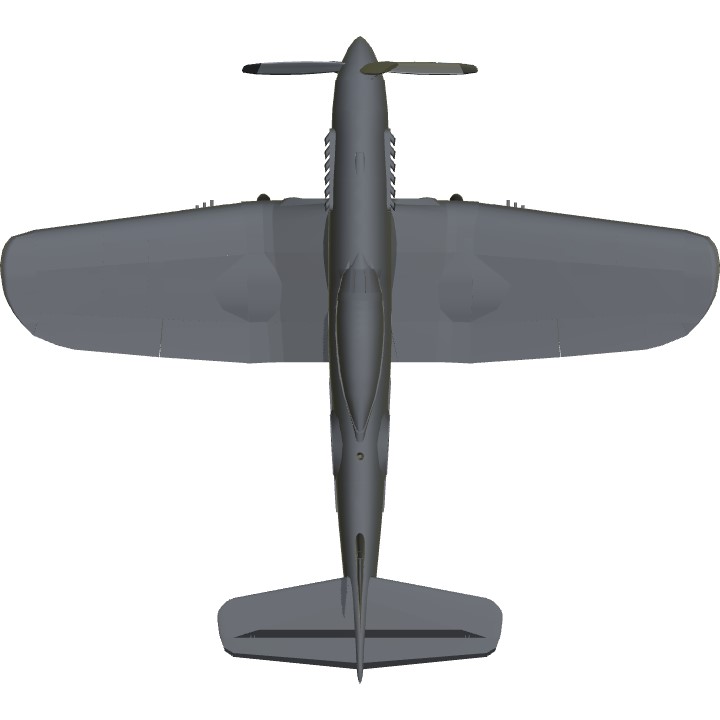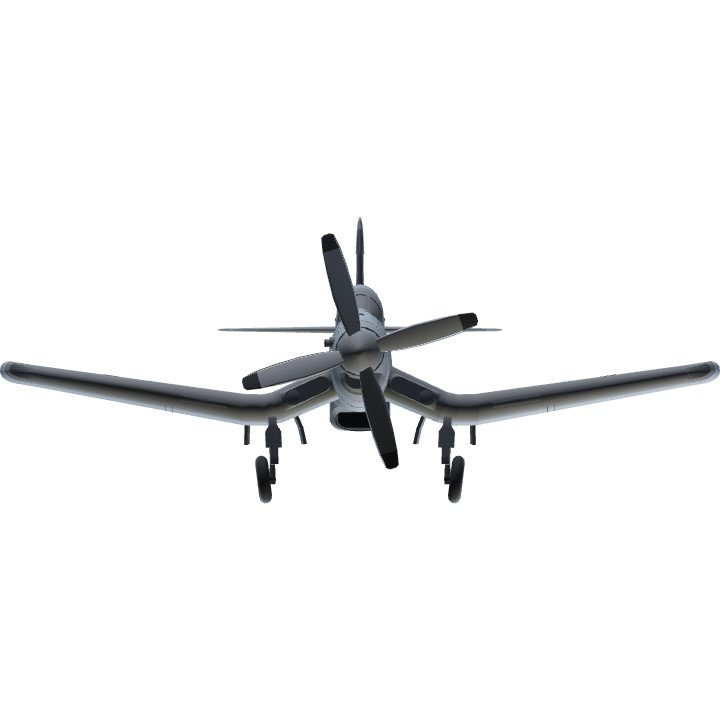My dad wanted me to make this
The p-51 i used for this combinationP-51
The corsair i used F4U
Corsair WIKI
The Vought F4U Corsair is an American fighter aircraft that saw service primarily in World War II and the Korean War. Designed and initially manufactured by Chance Vought, the Corsair was soon in great demand; additional production contracts were given to Goodyear, whose Corsairs were designated FG, and Brewster, designated F3A.
The Corsair was designed and operated as a carrier-based aircraft, and entered service in large numbers with the U.S. Navy in late 1944 and early 1945. It quickly became one of the most capable carrier-based fighter-bombers of World War II. Some Japanese pilots regarded it as the most formidable American fighter of World War II and its naval aviators achieved an 11:1 kill ratio. Early problems with carrier landings and logistics led to it being eclipsed as the dominant carrier-based fighter by the Grumman F6F Hellcat, powered by the same Double Wasp engine first flown on the Corsair's first prototype in 1940. Instead, the Corsair's early deployment was to land-based squadrons of the U.S. Marine Corps and U.S. Navy.
The Corsair served almost exclusively as a fighter-bomber throughout the Korean War and during the French colonial wars in Indochina and Algeria. In addition to its use by the U.S. and British, the Corsair was also used by the Royal New Zealand Air Force, French Naval Aviation, and other air forces until the 1960s.
From the first prototype delivery to the U.S. Navy in 1940, to final delivery in 1953 to the French, 12,571 F4U Corsairs were manufactured in 16 separate models. Its 1942–1953 production run was the longest of any U.S. piston-engined fighter.
P-51 Wiki
The North American Aviation P-51 Mustang is an American long-range, single-seat fighter and fighter-bomber used during World War II and the Korean War, among other conflicts. The Mustang was designed in April 1940 by a design team headed by James Kindelberger of North American Aviation (NAA) in response to a requirement of the British Purchasing Commission. The Purchasing Commission approached North American Aviation to build Curtiss P-40 fighters under license for the Royal Air Force (RAF). Rather than build an old design from another company, North American Aviation proposed the design and production of a more modern fighter. The prototype NA-73X airframe was rolled out on 9 September 1940, 102 days after the contract was signed, and first flew on 26 October.
The Mustang was designed to use the Allison V-1710 engine, which had limited high-altitude performance in its earlier variants. The aircraft was first flown operationally by the Royal Air Force (RAF) as a tactical-reconnaissance aircraft and fighter-bomber (Mustang Mk I). Replacing the Allison with a Rolls-Royce Merlin resulted in the P-51B/C (Mustang Mk III) model and transformed the aircraft's performance at altitudes above 15,000 ft (4,600 m) (without sacrificing range), allowing it to compete with the Luftwaffe's fighters. The definitive version, the P-51D, was powered by the Packard V-1650-7, a license-built version of the two-speed two-stage-supercharged Merlin 66, and was armed with six .50 caliber (12.7 mm) AN/M2 Browning machine guns. From late 1943, P-51Bs and P-51Cs (supplemented by P-51Ds from mid-1944) were used by the USAAF's Eighth Air Force to escort bombers in raids over Germany, while the RAF's Second Tactical Air Force and the USAAF's Ninth Air Force used the Merlin-powered Mustangs as fighter-bombers, roles in which the Mustang helped ensure Allied air superiority in 1944. The P-51 was also used by Allied air forces in the North African, Mediterranean, Italian and Pacific theaters. During World War II, Mustang pilots claimed to have destroyed 4,950 enemy aircraft.[nb 1]
At the start of the Korean War, the Mustang, by then redesignated F-51, was the main fighter of the United States until jet fighters, including North American's F-86, took over this role; the Mustang then became a specialized fighter-bomber. Despite the advent of jet fighters, the Mustang remained in service with some air forces until the early 1980s. After the Korean War, Mustangs became popular civilian warbirds and air racing aircraft.
Controls
Ag-1 (nothing idk why)
Ag-2 (wing fold)
The rest do nothing
Extra photo

Diloph
-bigchunguss
Specifications
General Characteristics
- Predecessor P-51D-30 Mustang
- Successors 2 airplane(s) +14 bonus
- Created On iOS
- Wingspan 37.2ft (11.3m)
- Length 33.5ft (10.2m)
- Height 14.8ft (4.5m)
- Empty Weight 7,205lbs (3,268kg)
- Loaded Weight 11,567lbs (5,247kg)
Performance
- Power/Weight Ratio 0.291
- Horse Power/Weight Ratio 0.086
- Wing Loading 19.0lbs/ft2 (92.9kg/m2)
- Wing Area 607.8ft2 (56.5m2)
- Drag Points 2131
Parts
- Number of Parts 424
- Control Surfaces 9
- Performance Cost 1,716





HAHAHAHAHAHAHAHAAUAUAUAUAUA
I am going To show my mother This, I once showed her a Cursed version of the Corsair that had Four jet Engines, and six Cannons LOL-- She's gon' Kill me.
@SirLoafsAlot well, im not gonna say its cursed because i really like it HAHHAHAHHAHAHAHA
They are Uber cursed
@teddyone02 @BLU3SCLU3S
@SirLoafsAlot aviation, am i right mate?
your dad is amazing ok, tell him.
These are so cursed they make me cry ;-;
Thank you@BigDoot
Absolutely a fantastic build. It is pleasing to look at and it performs great when flying
Yes@AllAmericanB17
To op for war
it's hard to fly
@WholeLottaBread hmm lets see
Lol @AzureCorp
Your dad cool :)
Top ten weird things of WWII
number 1:
this is what happens when an F4u corsair mates with a P 51 mustang
I never wanted to vomit so hard and so much before
@WholeLottaBread k
Ty@FerretAeronautics
Its a 51 body, u cant take off that radiator@teodor99
Ok thanks@Kangy
https://i.postimg.cc/NfxjHn8v/F4U.png
Its unique to say the least
Next level of creativity
It’s so cursed it’s good. Take my upvote.